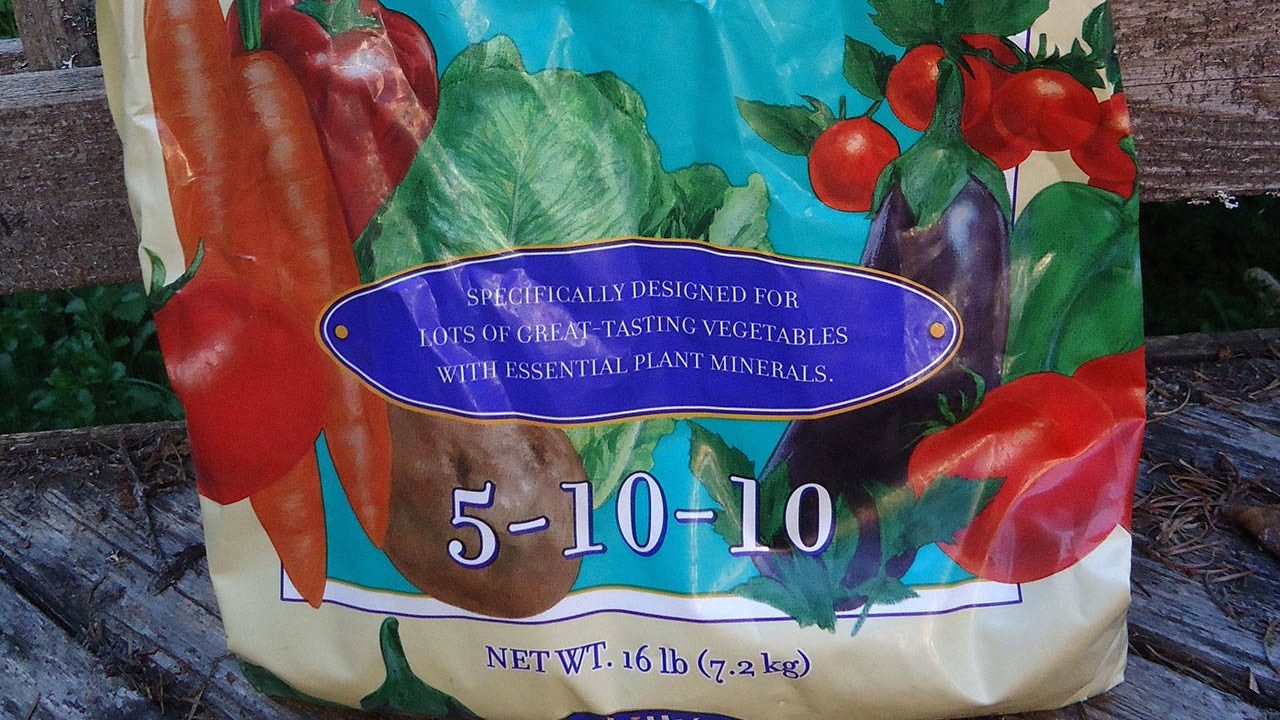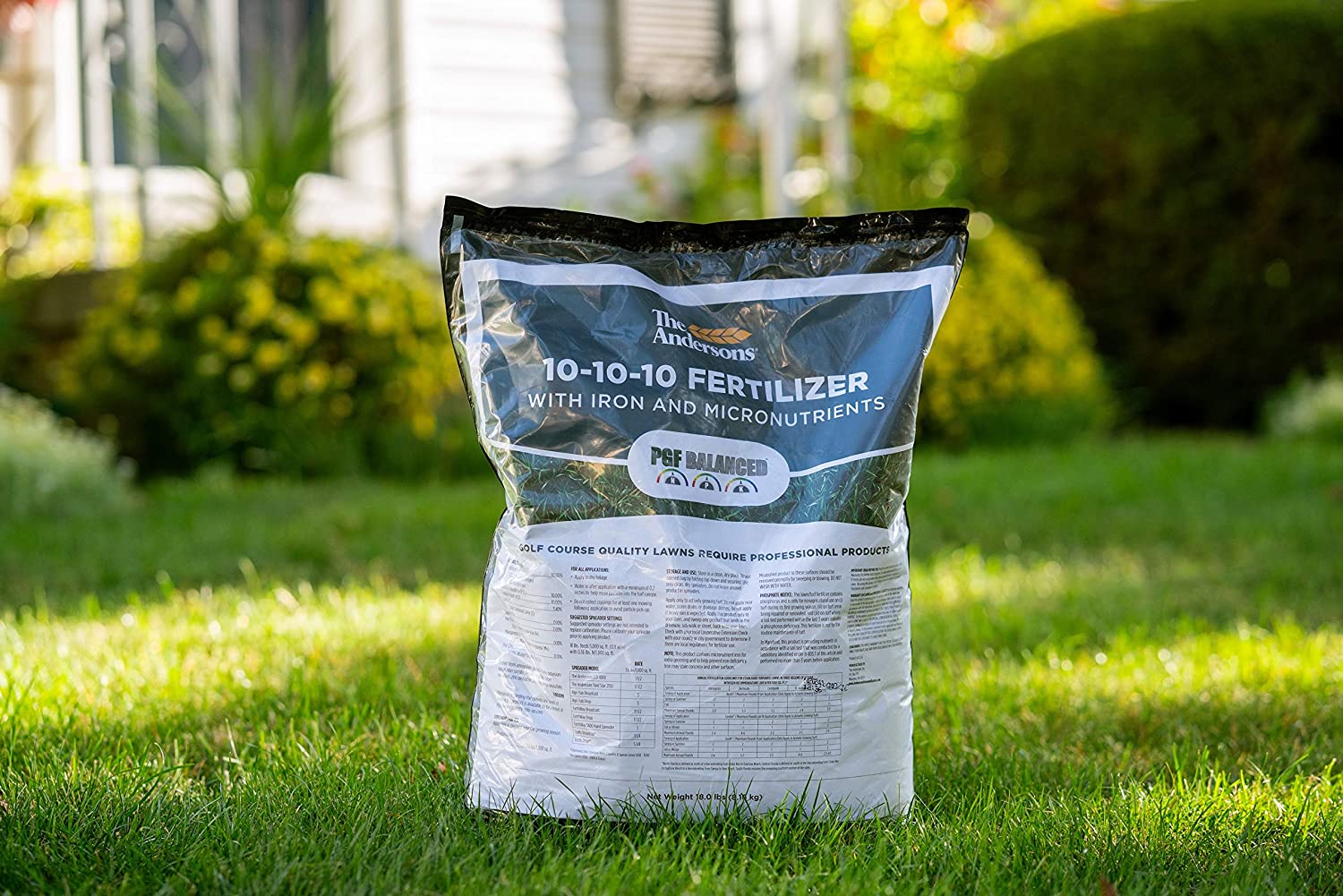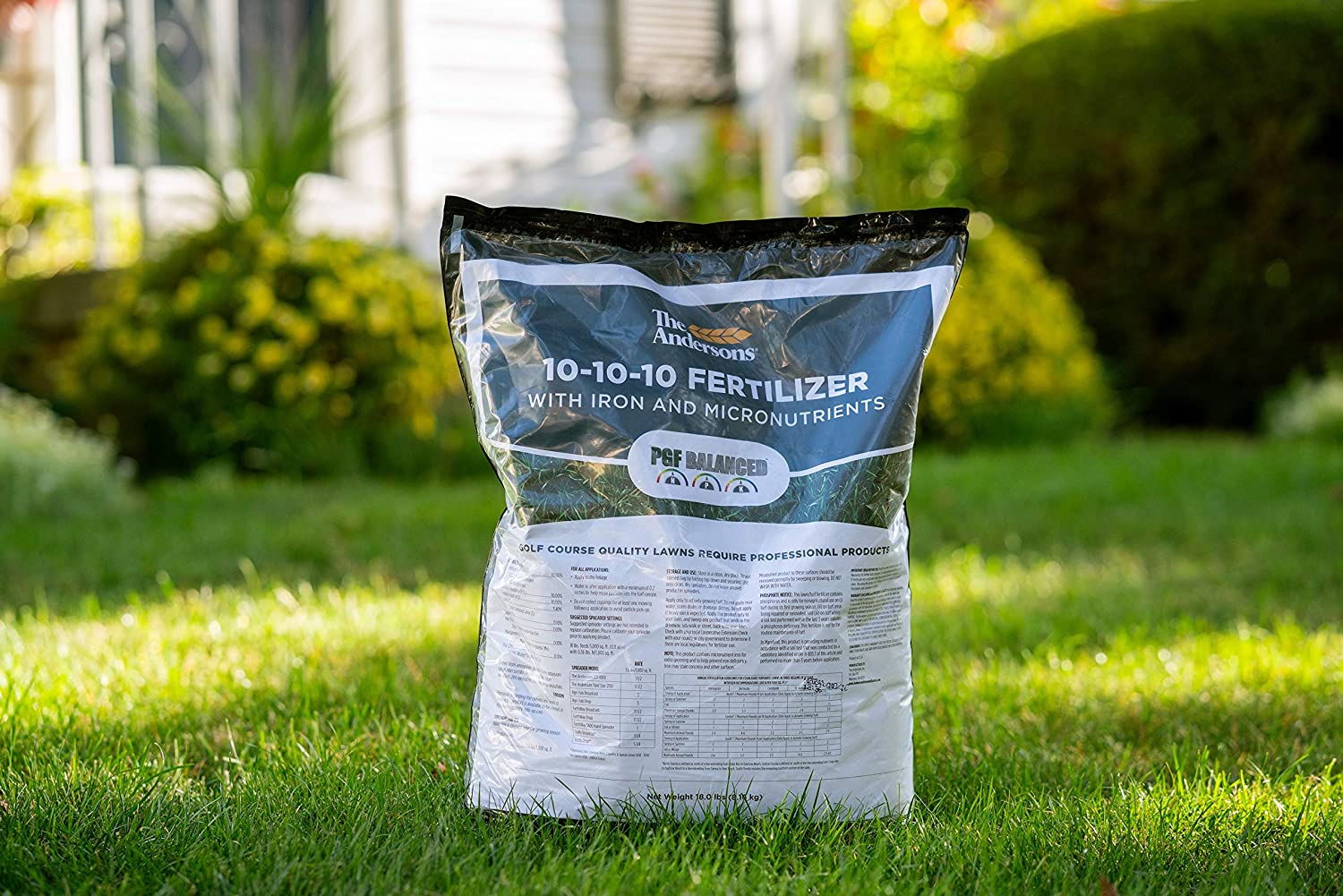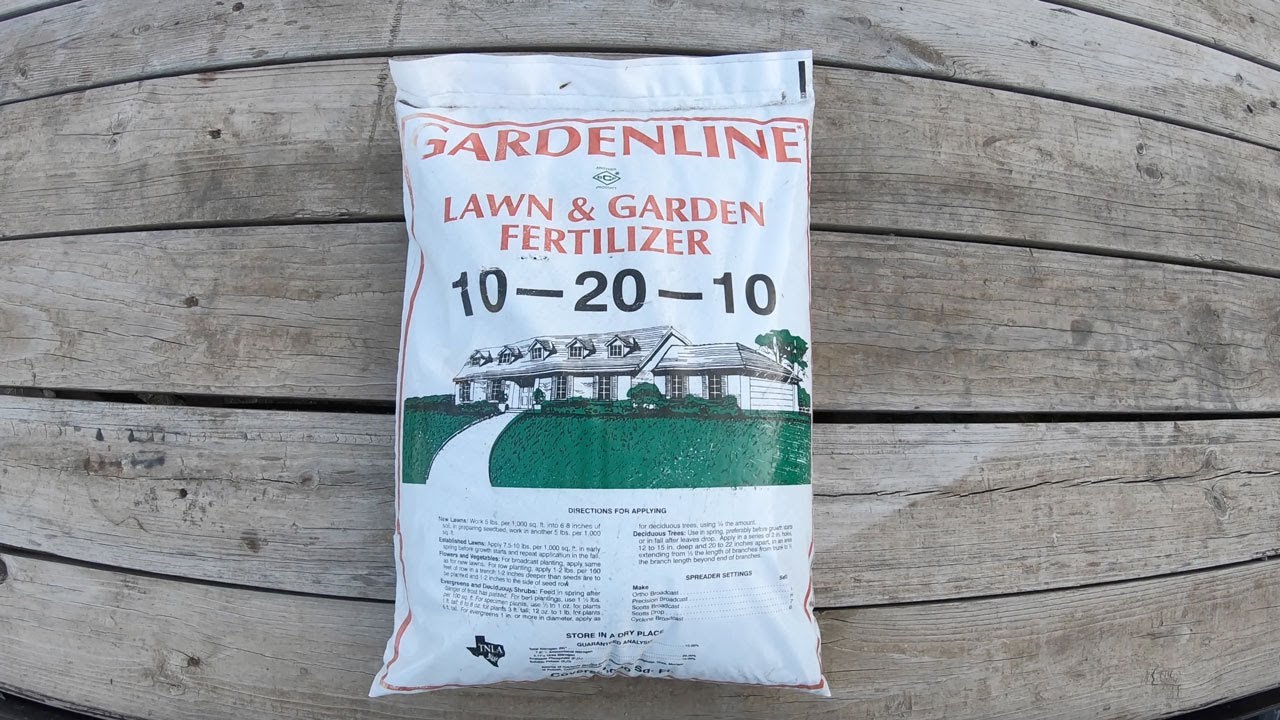Home>Gardening Basics>What Is 5-10-10 Fertilizer


Gardening Basics
What Is 5-10-10 Fertilizer
Modified: January 22, 2024
Discover what 5-10-10 fertilizer is, its benefits, and how to start using it in your garden. Get started with this essential gardening guide.
(Many of the links in this article redirect to a specific reviewed product. Your purchase of these products through affiliate links helps to generate commission for Chicagolandgardening.com, at no extra cost. Learn more)
Table of Contents
Introduction
Welcome to the world of gardening and plant care! As you embark on your journey to create a beautiful and thriving garden, you may find yourself in need of some fertilizer to boost the growth and health of your plants. One commonly used fertilizer is 5-10-10 fertilizer, which is known for its balanced nutrient composition.
Gardening enthusiasts often come across numbers like 5-10-10 when selecting fertilizers. These numbers represent the ratio of essential nutrients — nitrogen (N), phosphorus (P), and potassium (K) — present in the fertilizer. In this case, the 5-10-10 ratio signifies that the fertilizer contains 5% nitrogen, 10% phosphorus, and 10% potassium. Each of these nutrients plays a crucial role in supporting plant growth and development.
5-10-10 fertilizer is commonly used in a variety of gardening applications, from vegetable gardens to flower beds. Its balanced nutrient composition makes it suitable for a wide range of plants, including both flowers and edible crops. Before delving deeper into the composition and uses of 5-10-10 fertilizer, let’s take a closer look at why these nutrients are crucial for plant growth.
Nitrogen (N) is responsible for promoting leafy growth in plants. It is an essential element in the production of chlorophyll, the green pigment that enables plants to convert sunlight into energy through photosynthesis. Phosphorus (P) plays a vital role in root development, helping plants establish a strong and healthy foundation. Additionally, phosphorus aids in the processes of flower and fruit production, contributing to overall plant health and productivity. Lastly, potassium (K) is crucial for various aspects of plant growth, including disease resistance, root development, and the movement of water and nutrients within the plant.
Now that we understand the importance of these key nutrients, let’s delve deeper into the composition and advantages of 5-10-10 fertilizer. Get ready to unlock the secrets behind this popular plant booster and discover how to optimize its use in your garden!
What is 5-10-10 Fertilizer?
5-10-10 fertilizer is a type of balanced fertilizer that contains a specific ratio of essential nutrients required for plant growth. The numbers, as mentioned earlier, represent the percentage of nitrogen (N), phosphorus (P), and potassium (K) in the fertilizer, respectively. This particular formulation of 5-10-10 makes it an ideal choice for promoting overall plant health, root development, and fruit and flower production.
One of the primary features of 5-10-10 fertilizer is its balanced nutrient composition. With equal proportions of phosphorus and potassium, this fertilizer helps plants establish strong root systems, which are essential for nutrient absorption and overall plant stability. Additionally, the moderate nitrogen content promotes healthy leafy growth, enhancing the plant’s ability to photosynthesize and produce energy.
Due to its balanced nature, 5-10-10 is often used as a general-purpose fertilizer in various gardening applications. It can be used on both flowering and non-flowering plants, including vegetables, fruits, ornamentals, and lawns. This versatility makes 5-10-10 fertilizer a popular choice among gardeners and homeowners alike.
While 5-10-10 fertilizer is suitable for a wide range of plants, it is particularly beneficial for plants that require ample phosphorus and potassium, such as those in the blooming and fruiting stages of growth. These nutrients play a crucial role in promoting flower and fruit development, resulting in vibrant and bountiful blooms.
Furthermore, 5-10-10 fertilizer is often used as a starter fertilizer for newly transplanted or established plants. The balanced nutrient ratio helps plants overcome transplant shock and encourages healthy root establishment, enabling them to quickly adapt to their new environment and thrive.
It’s important to note that 5-10-10 fertilizer is just one of many types of fertilizers available in the market. Depending on the specific needs of your plants, soil conditions, and gardening goals, other formulations may be more suitable. Understanding the nutrient requirements of different plants will help you make informed decisions when selecting the right fertilizer.
Now that we have a solid understanding of what 5-10-10 fertilizer is and its general applications, let’s take a closer look at the specific composition of this fertilizer and the advantages it offers to your plants.
Composition of 5-10-10 Fertilizer
The composition of 5-10-10 fertilizer highlights the specific proportions of essential nutrients it contains. As mentioned earlier, the numbers in the fertilizer’s name represent the percentage of nitrogen (N), phosphorus (P), and potassium (K) it contains. In the case of 5-10-10 fertilizer, it consists of 5% nitrogen, 10% phosphorus, and 10% potassium.
These three nutrients are vital for plant growth and development, each serving a unique purpose:
- Nitrogen (N): Nitrogen is responsible for promoting lush, green foliage and vigorous growth. It is an essential component of amino acids, proteins, and chlorophyll, which are crucial for photosynthesis. Nitrogen supports the overall health and sustainability of plants, ensuring they have the necessary energy to carry out essential functions.
- Phosphorus (P): Phosphorus is involved in various metabolic processes within plants. It aids in root development, energy transfer, and the formation of new tissues. Phosphorus is particularly important in influencing blooming and fruiting, as it supports flower formation, pollination, and the development of healthy, bountiful fruits.
- Potassium (K): Potassium plays a vital role in overall plant health and stress tolerance. It ensures the proper functioning of enzymes and regulates water movement within plants. Potassium also enhances disease resistance, promotes strong root development, and enhances nutrient uptake.
With its composition of 5-10-10, this fertilizer provides a balanced blend of nutrients that cater to the essential growth needs of plants. The slightly higher percentages of phosphorus and potassium compared to nitrogen make it particularly suitable for plants in the blooming and fruiting stages of their growth cycle. These nutrients promote flowering, fruit production, and root development, resulting in healthy, vibrant plants.
It is important to note that 5-10-10 fertilizer may also contain secondary and micronutrients that further enhance plant growth and health. Secondary nutrients like calcium (Ca), magnesium (Mg), and sulfur (S) are often included in fertilizers to address specific nutrient deficiencies in soils. Micronutrients such as iron (Fe), manganese (Mn), zinc (Zn), copper (Cu), molybdenum (Mo), and boron (B) may also be present in smaller amounts to support various metabolic processes in plants.
Understanding the composition of 5-10-10 fertilizer allows gardeners to effectively provide plants with the nutrients they need for flourishing growth. By incorporating this fertilizer into your gardening routine, you can provide a balanced nutrient supply that supports overall plant health, root development, and flowering and fruit production.
Advantages of 5-10-10 Fertilizer
Using 5-10-10 fertilizer comes with several advantages that make it a popular choice among gardeners. Its balanced nutrient composition and versatility make it suitable for a wide range of plants and gardening applications. Let’s explore some of the key advantages of using 5-10-10 fertilizer:
- Balanced Nutrient Ratio: One of the primary advantages of 5-10-10 fertilizer is its balanced nutrient ratio. The equal proportions of phosphorus and potassium help promote root development and overall plant health. Additionally, the moderate nitrogen content supports lush leafy growth and ensures plants have sufficient energy for essential functions.
- Versatility: 5-10-10 fertilizer is suitable for various plants, including both flowering and non-flowering varieties. It can be used in vegetable gardens, flower beds, fruit trees, and even lawns. Its versatility makes it a go-to choice for gardeners looking for a multi-purpose fertilizer.
- Starter Fertilizer: Due to its balanced nutrient composition, 5-10-10 fertilizer is often used as a starter fertilizer. It aids in the establishment of newly transplanted or established plants by promoting root growth and helping plants overcome transplant shock. This enables plants to adapt quickly to their new environment and thrive.
- Flower and Fruit Development: The higher phosphorus and potassium content in 5-10-10 fertilizer make it an excellent choice for plants in the blooming and fruiting stages. These nutrients promote flower formation, pollination, and the development of healthy, abundant fruits. Using this fertilizer can result in more vibrant blooms and higher yields of fruits and vegetables.
- Overall Plant Health: The balanced nutrient supply provided by 5-10-10 fertilizer contributes to the overall health and vigor of plants. It enhances disease resistance, supports the development of strong root systems, and improves nutrient uptake. Healthy plants are better equipped to withstand environmental stresses and are more resistant to pests and diseases.
By utilizing 5-10-10 fertilizer in your gardening routine, you can take advantage of these benefits to support the growth and health of your plants. However, it is important to remember that different plants have varying nutrient requirements, so it is always recommended to assess the specific needs of your plants and adjust fertilizer applications accordingly.
Now that we have explored the advantages of 5-10-10 fertilizer, let’s delve into some of the potential disadvantages or considerations associated with its use. Understanding both the pros and cons will enable you to make informed decisions when incorporating this fertilizer into your gardening practices.
Disadvantages of 5-10-10 Fertilizer
While 5-10-10 fertilizer has its advantages, it is important to consider its disadvantages as well. Understanding these drawbacks can help gardeners make informed decisions when selecting the right fertilizer for their plants. Let’s explore some of the potential disadvantages of using 5-10-10 fertilizer:
- High Phosphorus and Potassium Content: The higher concentrations of phosphorus and potassium in 5-10-10 fertilizer may not be suitable for all plants and soil types. Some plants may require different nutrient ratios, such as higher nitrogen levels for leafy growth, or lower levels of certain nutrients depending on their specific needs. It is crucial to assess the specific requirements of your plants and adjust fertilizer applications accordingly.
- Environmental Impact: Excessive use of any fertilizer, including 5-10-10, can have negative environmental implications. When these nutrients are applied in excess, they can lead to nutrient runoff, which can contaminate water bodies and contribute to the growth of harmful algal blooms. It is important to follow recommended application rates and use environmentally friendly practices when applying fertilizers.
- Potential Nutrient Imbalance: While 5-10-10 fertilizer provides a balanced nutrient supply, prolonged and exclusive use of this fertilizer may lead to nutrient imbalances in the soil. Over time, excessive phosphorus and potassium levels can accumulate, which may result in nutrient deficiencies or imbalances in other essential elements. Regular soil testing can help monitor nutrient levels and guide appropriate fertilizer application.
- Cost: Compared to other fertilizers, 5-10-10 fertilizer may be relatively more expensive. The higher cost can be a disadvantage for gardeners on a tight budget or those with large gardening areas. It is always worth considering the cost-effectiveness of different fertilizers and their specific benefits for your plants.
- Specific Plant Needs: Different plants have varying nutrient requirements, and 5-10-10 fertilizer may not meet all plant needs. Some plants may require specialized fertilizers with different nutrient ratios or additional micronutrients. It is essential to research and understand the specific requirements of the plants in your garden to provide them with the nutrients they need for optimal growth.
By being aware of the potential disadvantages of 5-10-10 fertilizer, you can make informed decisions when selecting and using fertilizers in your garden. Consider the specific needs of your plants, environmental impacts, and long-term soil health to ensure you are choosing the most suitable fertilizer for your gardening goals.
Now that we have examined the advantages and disadvantages of 5-10-10 fertilizer, let’s explore some tips to effectively use this fertilizer for optimal results in your garden.
How to Use 5-10-10 Fertilizer?
Using 5-10-10 fertilizer effectively in your garden requires proper application techniques and considerations. By following these steps, you can ensure that your plants receive the right amount of nutrients for healthy growth:
- Read the Instructions: Before using any fertilizer, including 5-10-10, carefully read the package instructions. Pay attention to the recommended application rates and frequency. This will help you apply the fertilizer correctly and avoid over- or under-fertilizing your plants.
- Prepare the Soil: Prior to applying the fertilizer, prepare the soil by removing any weeds or debris and loosening it with a garden fork or tiller. This will help the fertilizer penetrate the soil effectively and give your plants better access to the nutrients.
- Apply the Fertilizer: Distribute the 5-10-10 fertilizer evenly around the base of the plants, keeping it at least a few inches away from the stem. Avoid directly touching the foliage with the fertilizer to prevent potential burning or damage. The specific application rate will depend on the plant type and its nutrient requirements.
- Water the Plants: After applying the fertilizer, water the plants thoroughly. This will help the nutrients in the fertilizer dissolve and reach the plant roots. It is important to water deeply to ensure the nutrients are properly absorbed into the soil.
- Monitor and Adjust: Regularly monitor your plants for any signs of nutrient deficiencies or excesses. Adjust the fertilizer application rates or consult a gardening expert if necessary. Soil testing can help determine nutrient levels and guide future fertilizer applications.
- Follow Safety Precautions: When using any fertilizer, always follow safety precautions mentioned on the product label. Wear gloves, avoid inhaling the dust or particles, and store the fertilizer in a safe place away from children and pets. Proper handling and storage will help ensure your safety and prevent any accidents.
Remember, each plant has specific nutrient requirements, and the application rates and frequency may vary. It is always advisable to consult plant-specific and region-specific guidelines for optimal fertilizer use.
By following these steps and guidelines, you can effectively use 5-10-10 fertilizer to provide the necessary nutrients to your plants, supporting their growth and overall health.
Now that we have explored how to use 5-10-10 fertilizer, let’s uncover some additional tips to maximize its effectiveness in your garden.
Tips for Using 5-10-10 Fertilizer
To make the most of 5-10-10 fertilizer in your garden, consider these helpful tips to ensure optimal results:
- Soil Test: Before applying any fertilizer, conduct a soil test to determine the nutrient levels and pH of your soil. This will help you understand the specific needs of your plants and guide you in adjusting the fertilizer application accordingly.
- Follow the Recommended Application Rates: Every fertilizer has specific recommended application rates. Be sure to follow these guidelines to avoid over- or under-fertilizing your plants. Adjust the rates based on the age, size, and specific requirements of your plants.
- Time the Application: Apply the 5-10-10 fertilizer at the appropriate time according to the growth stages of your plants. For flowering and fruiting plants, apply the fertilizer when they are entering their respective blooming and fruiting periods for maximum benefit.
- Consider the Weather Conditions: Take into account the weather conditions when applying the fertilizer. It is generally recommended to avoid applying fertilizers during extreme heat or drought conditions. Applying the fertilizer when the soil is adequately moist will help ensure proper nutrient absorption.
- Combine with Organic Matter: Enhance the effectiveness of 5-10-10 fertilizer by combining it with organic matter such as compost or well-rotted manure. This will improve the soil structure, increase nutrient retention, and promote overall soil health.
- Apply in Multiple Applications: Instead of applying all the fertilizer at once, consider dividing the recommended amount into multiple applications throughout the growing season. This will provide a steady supply of nutrients and reduce the risk of nutrient runoff.
- Maintain Proper Watering: Adequate and consistent watering is essential for the proper absorption and distribution of nutrients. Ensure that your plants receive the right amount of water, neither overwatering nor underwatering them.
- Store the Fertilizer Properly: Follow the storage instructions provided with the fertilizer. Store it in a cool, dry place away from direct sunlight and humidity. Proper storage will help maintain the integrity and effectiveness of the fertilizer for longer periods.
- Monitor Plant Response: Regularly observe your plants for any signs of nutrient deficiencies or excesses. Adjust the fertilizer application rates or consult a gardening expert if necessary. Understanding and responding to your plants’ needs will help ensure their optimal growth.
By following these tips, you can maximize the benefits of 5-10-10 fertilizer and support the healthy growth of your plants. Remember to always consider the specific requirements of your plants and adapt your fertilizer application accordingly.
Now that we have explored tips for using 5-10-10 fertilizer, let’s summarize the key points before concluding our discussion on this versatile fertilizer.
Conclusion
5-10-10 fertilizer is a balanced fertilizer that contains nitrogen, phosphorus, and potassium in equal proportions. This versatile fertilizer offers several advantages, including its balanced nutrient composition, versatility for various plants, suitability as a starter fertilizer, and promotion of flower and fruit development. However, it is essential to consider the potential disadvantages, such as high phosphorus and potassium content, environmental impact, potential nutrient imbalance, and cost.
When using 5-10-10 fertilizer, ensure that you read and follow the instructions, prepare the soil properly, apply the fertilizer accurately, water the plants adequately, monitor their response, and store the fertilizer safely. Additionally, conducting a soil test, considering the specific requirements of your plants, and incorporating organic matter can optimize the effectiveness of this fertilizer in your garden.
Remember that while 5-10-10 fertilizer is a popular choice, different plants have varying nutrient needs. It is important to assess the specific requirements of your plants and adapt your fertilizer use accordingly. Regularly monitoring your plants’ health and adjusting your fertilizer application rates will help ensure their optimal growth and development.
By understanding the composition, advantages, disadvantages, and proper usage of 5-10-10 fertilizer, you are now equipped to make informed decisions for your gardening needs. Experiment with different fertilizers and techniques to find the best approach for your unique garden and enjoy the rewards of beautiful, thriving plants.








